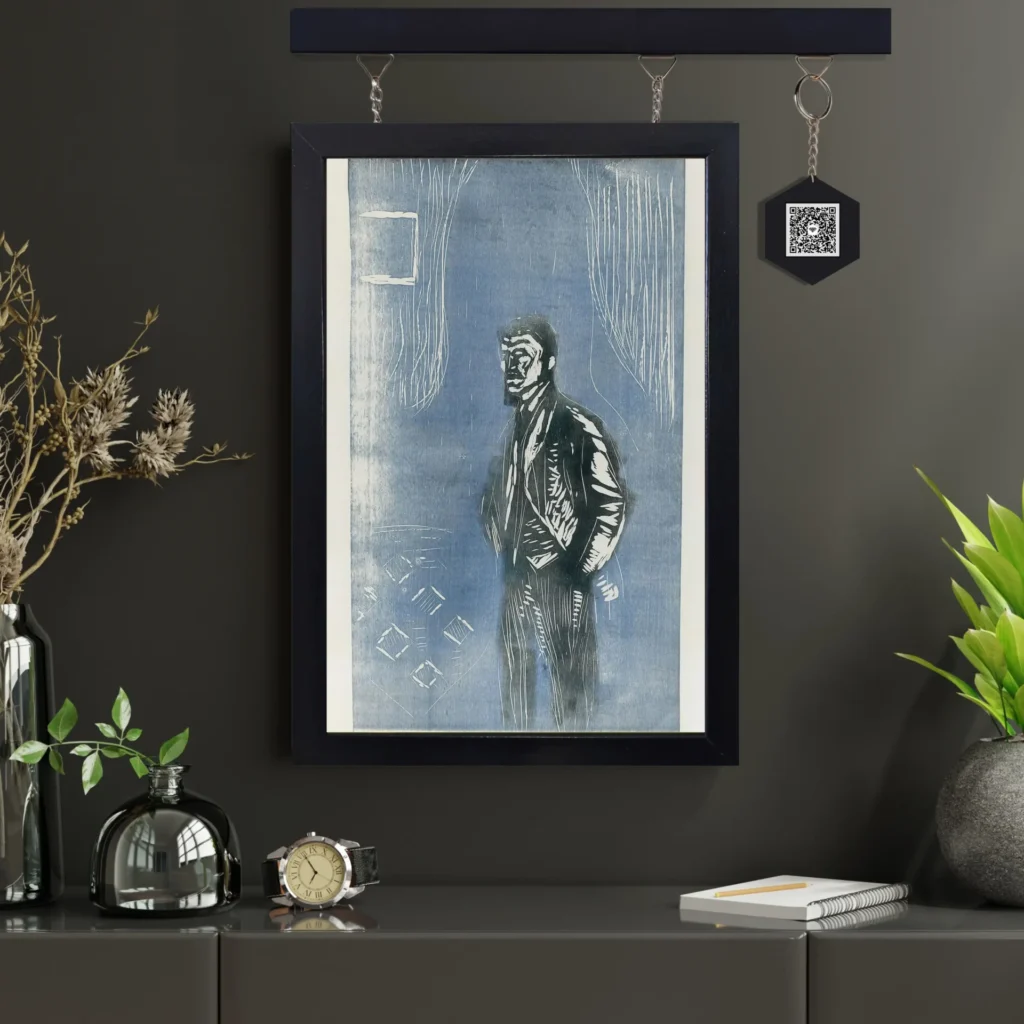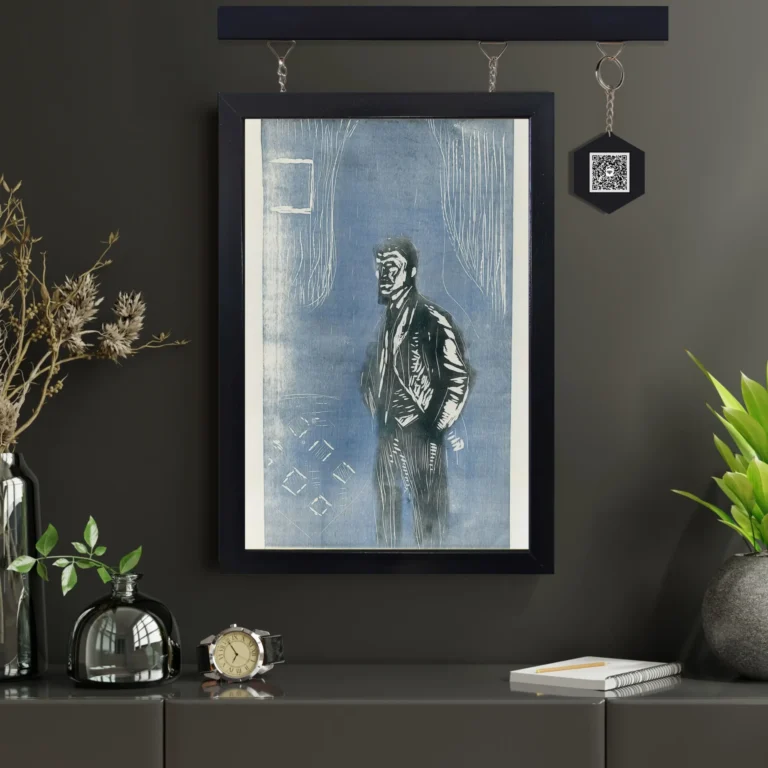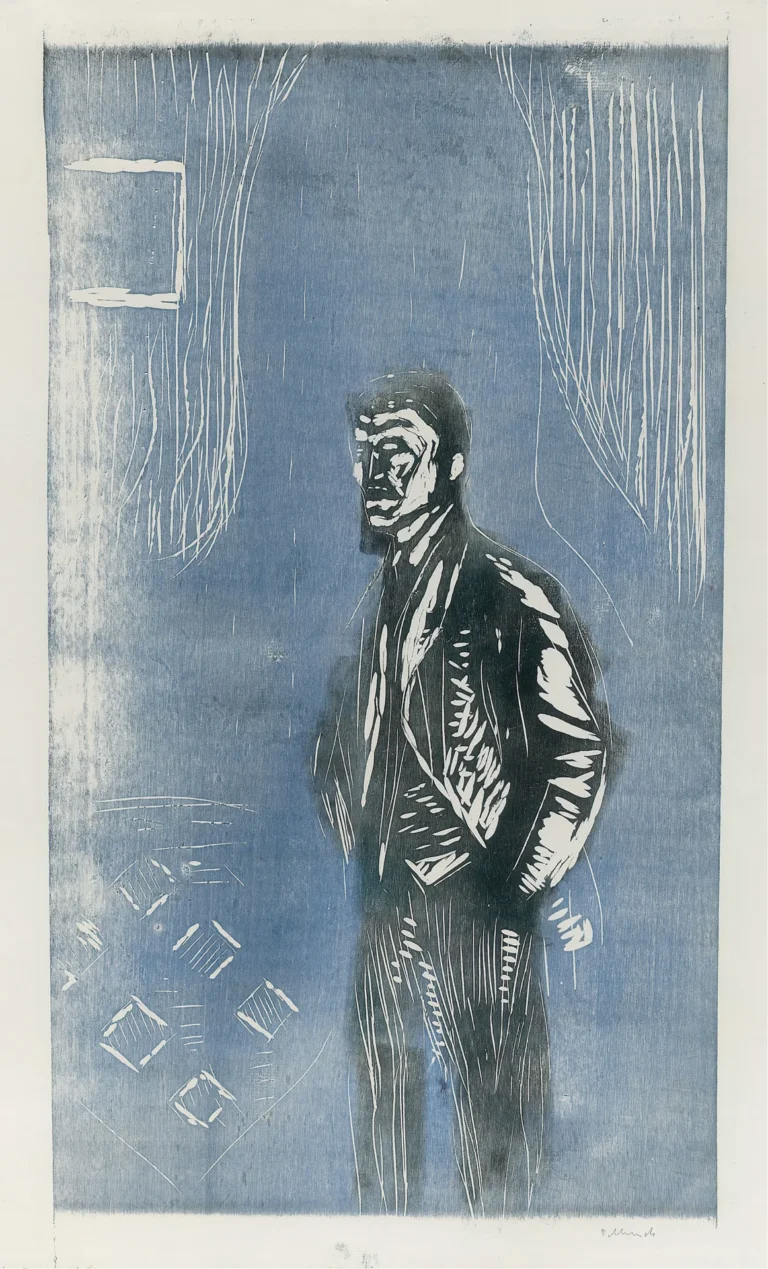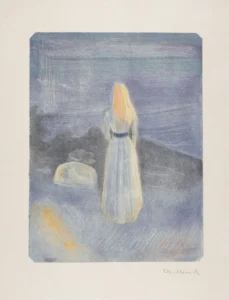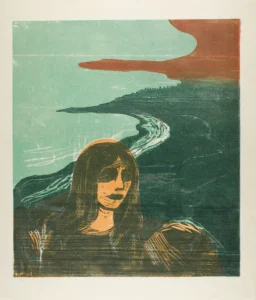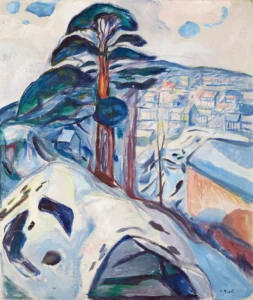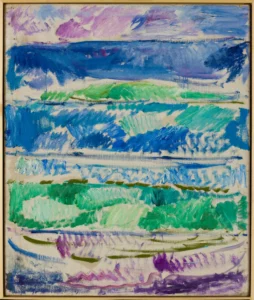Self-Portrait in Moonlight (1904–1906)
Created during the years 1904 to 1906, Edvard Munch's Self-Portrait in Moonlight presents an introspective glimpse into the artist's psyche, illuminated by nocturnal tones. This artwork reflects Munch's exploration of light and shadow, as well as the emotional weight conveyed through his distinct brushwork. Much like his other celebrated pieces, this self-portrait stands as a testament to Munch's connection with nature and the inner turmoil that often characterized his life.
1904 - 1906
About the Artwork
Edvard Munch, known for his emotional depth and pioneering contributions to Expressionism, often used self-portraiture to explore the complexities of his identity and artistic vision. In Self-Portrait in Moonlight, painted between 1904 and 1906, Munch turned the moon's luminescence into a metaphor for introspection and existential musings. This period in Munch's life was marked by both personal struggles and artistic experimentation. The interplay of light and shadow in this work provides insight into not only Munch's external surroundings but also the tumultuous inner landscape that dominated his thoughts and experiences. Though less documented than works like The Scream, this self-portrait shares a similar emotional resonance, inviting viewers into the artist's contemplative world.
Did You Know
Edvard Munch frequently depicted the moon in his works, using its light to convey emotional depth. In many paintings, including Self-Portrait in Moonlight, the moon serves as a symbol of both beauty and the haunting nature of solitude.
Munch’s self-portraits often reflect his evolving understanding of self and artistic identity. In this work, the artist’s gaze towards the viewer creates a dialogue between the external world and his internal struggles, common themes in Munch’s oeuvre.
The haunting beauty of the Norwegian landscape profoundly influenced Munch’s art. While Self-Portrait in Moonlight highlights his personal emotions, the ethereal quality of the moonlight also ties it back to his earlier works showcasing the lucid landscapes of Norway.




